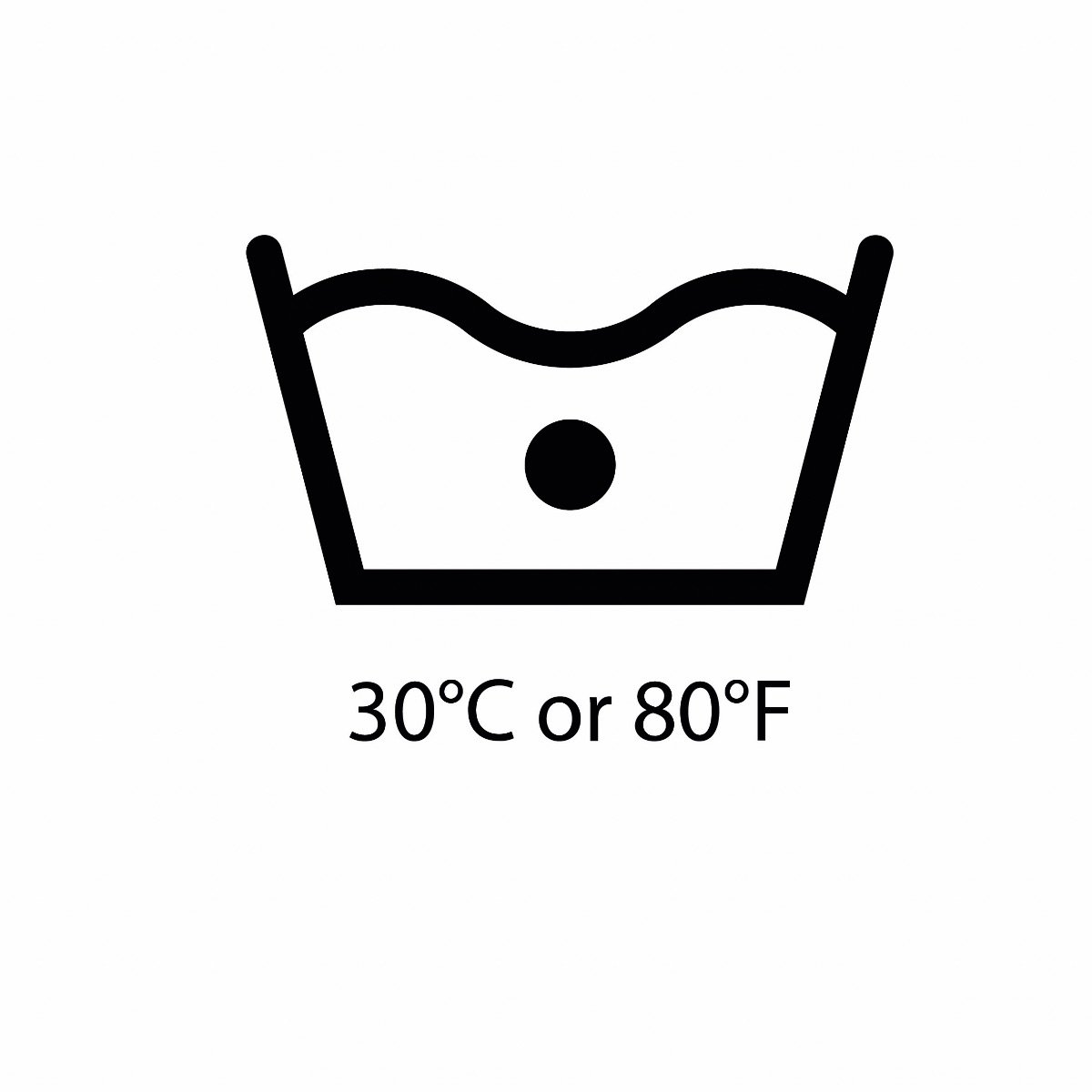A Few Thoughts on Washing Woollens
One of the beauties of wool is that it doesn't need frequent washing. But there comes a time when all woollens need a little TLC. And it worries people. Mainly the ones who put all the effort into creating them in the first place. So I thought a few musings on the subject might help alleviate some of the anxiety...
We've all seen sheep out in the fields and hills in all weathers; they are tough creatures and so are their fleeces. They can take a bit of muck and water. And anyone who has ever been round a spinning mill will know that those same fleeces get washed, pulled apart and run through a formidable array of machines before we get the end product. So, if wool can survive all that, what goes wrong when we wash our woollies? And, whether we are washing them by hand or by machine, how can we keep them at their best?
With apologies to any grandmothers already well versed in sucking eggs...
1. Read your ball bands and know your symbols!
Before we get anywhere near water and detergent, we need to know what the yarn manufacturer recommends we do with their product. Care instructions may be given in plain English, if we are lucky, but we are sometimes presented with a bewildering array of symbols to interpret. If they mystify you as much as they do me, hopefully this chart will help.
Not all the symbols are relevant to knitwear but here are a few thoughts on the ones you are most likely to encounter.
2. Hand wash or machine wash?
If you have a good quality washing machine with a dedicated wool wash, you should be ok to use it to wash garments made from machine washable yarns with this symbol on the ball band. Super wash yarn garments have a reputation for stretching when washed so consider putting them in a laundry bag (or a pillow case for larger items) to limit their movement in the drum.
My preference is always for hand washing, even with super wash yarns, but if you decide to use your machine for items made from yarns recommended for hand washing, try washing a swatch of the yarn first to see what happens, ideally measuring your gauge before and after washing to see if there has been any shrinkage before you risk your garment in the machine.
3. Temperature
Most yarns suggest a washing temperature of 30C but I prefer to go lower than this and generally wash at around 20C. Using a consistent water temperature throughout the washing process is also important, as abrupt temperature changes can increase the risk of felting. So avoid using a cold rinse after a lukewarm wash.
4. Agitation
Woollens don't like to be agitated or wrung out. Wool is naturally water repellant so it can take a bit of time and effort to get it thoroughly saturated but it is a mistake to squeeze and handle it too much in the bowl. Push your woollies under and leave them to soak for at least 20 minutes. Dab stains with a bit of your detergent but don't rub or you risk ending up with a felted patch.
To minimise the rinsing part of the process, be sparing with your detergent and consider using a low suds product like Farmers' Wool Wash that is easy to rinse out, or remove the necessity to rinse altogether by using a no-rinse formula like Eucalan, to minimise the handling of your garment when wet.
Farmers' Wool Wash is new to FFF HQ but I have tried it and it smells wonderful! It is infused with lavender, rosemary and cedar essential oils – all scents that moths don’t like. Although not cheap, a little goes a long way – 5 ml is enough for a hand wash and it can also be used in the washing machine.
5. Drying
The best way to dry woollens is to lay them flat. I confess I don't always do this in practice, as it does take longer for items to dry this way and they take up space on the floor. However, it means you can accurately reshape them whilst damp, avoid unsightly indentations from your washing line, pegs or airer, and minimise the need for steaming when dry.
And I have definitely learnt the hard way not to hang super wash garments up – once they have stretched under their own weight they don't go back to their original size, however hard you try to persuade them...
I use my blocking mats for drying flat. These are children's foam play mats – the ones that look like giant jigsaw pieces. They work better than a towel as they are non-absorbent. If a garment has been well blocked when first made, it's not generally necessary to go through the whole process of measuring and pinning again after washing. It is usually enough to gently tweak the garments into shape. The only exception to this that I have experience of recently was with a linen jumper that needed a very firm hand to get it straightened out.
6. Steaming and ironing
Unlike synthetic yarns which can melt when subjected to heat, most yarns made from wool, cotton or linen will tolerate a little light steaming from a cool iron. Don't put the weight of the iron on the fabric, though – just hover the iron over it then leave the garment to cool before lifting it off the ironing board.







